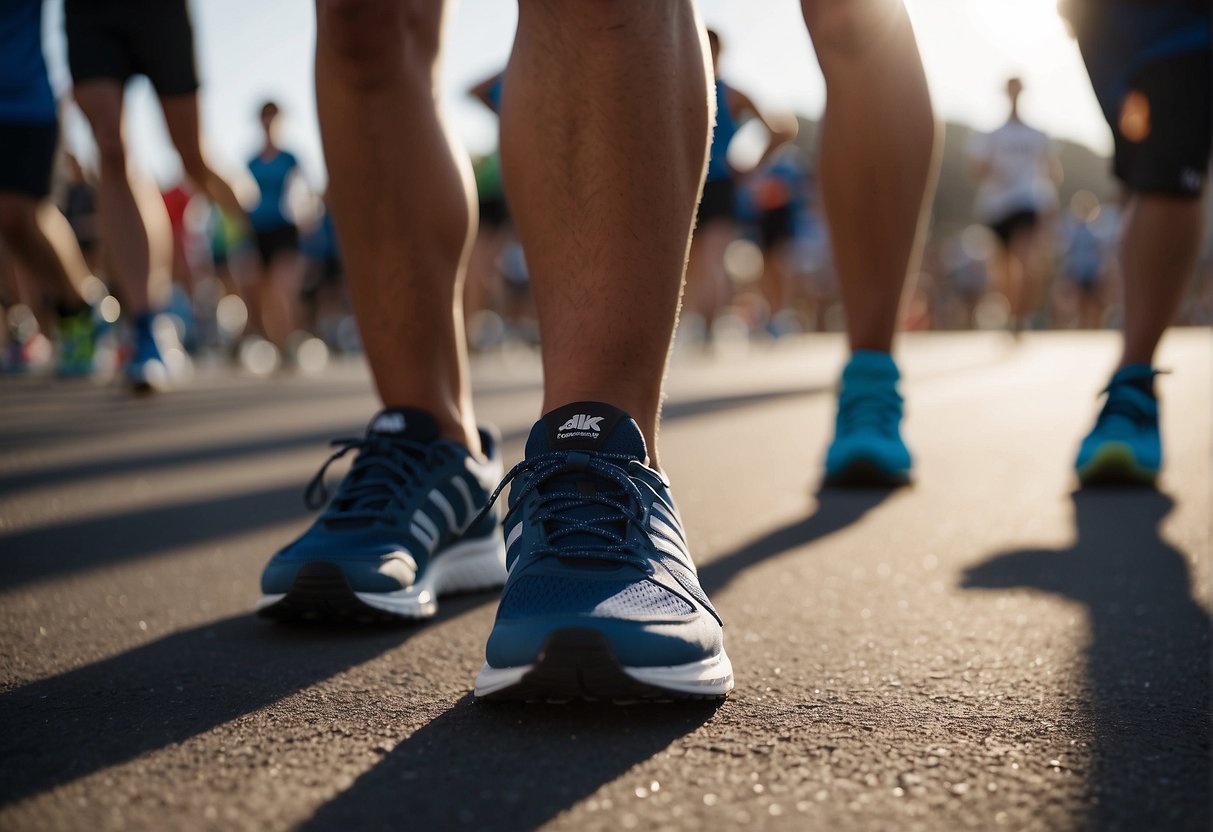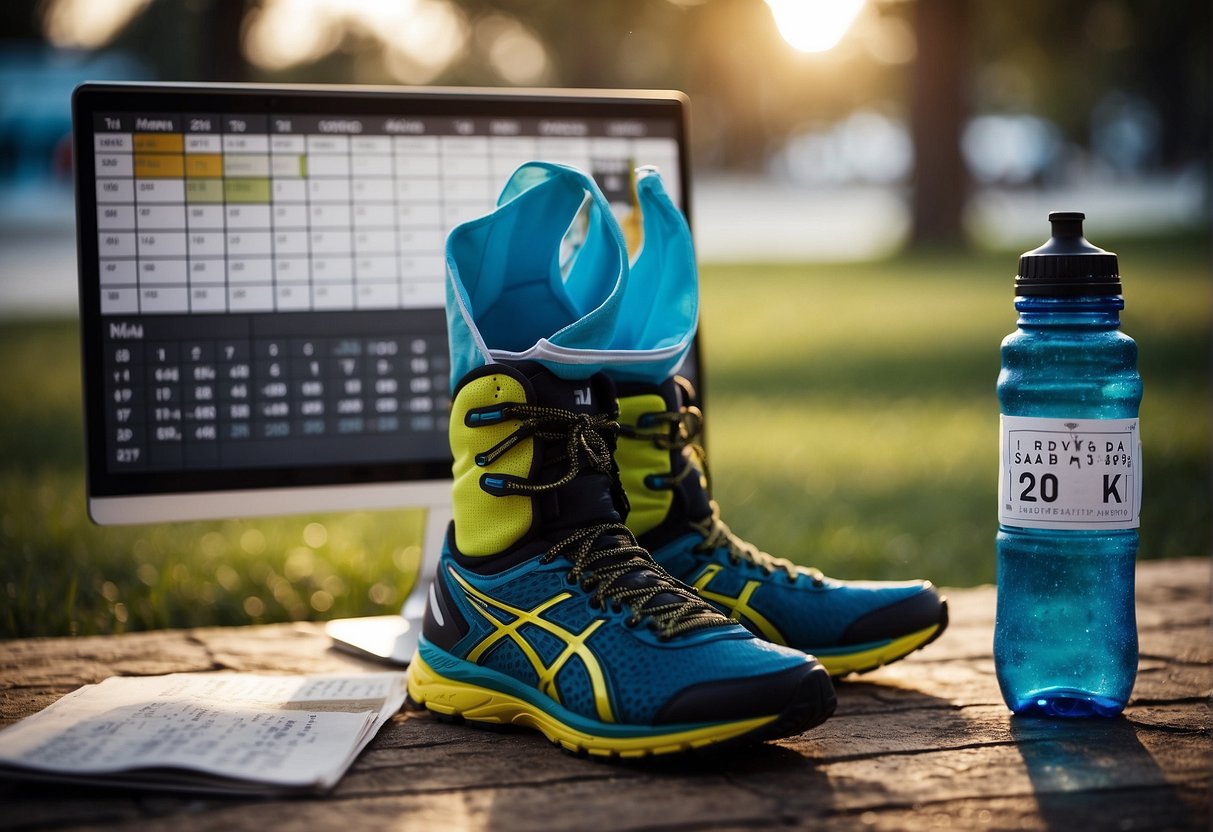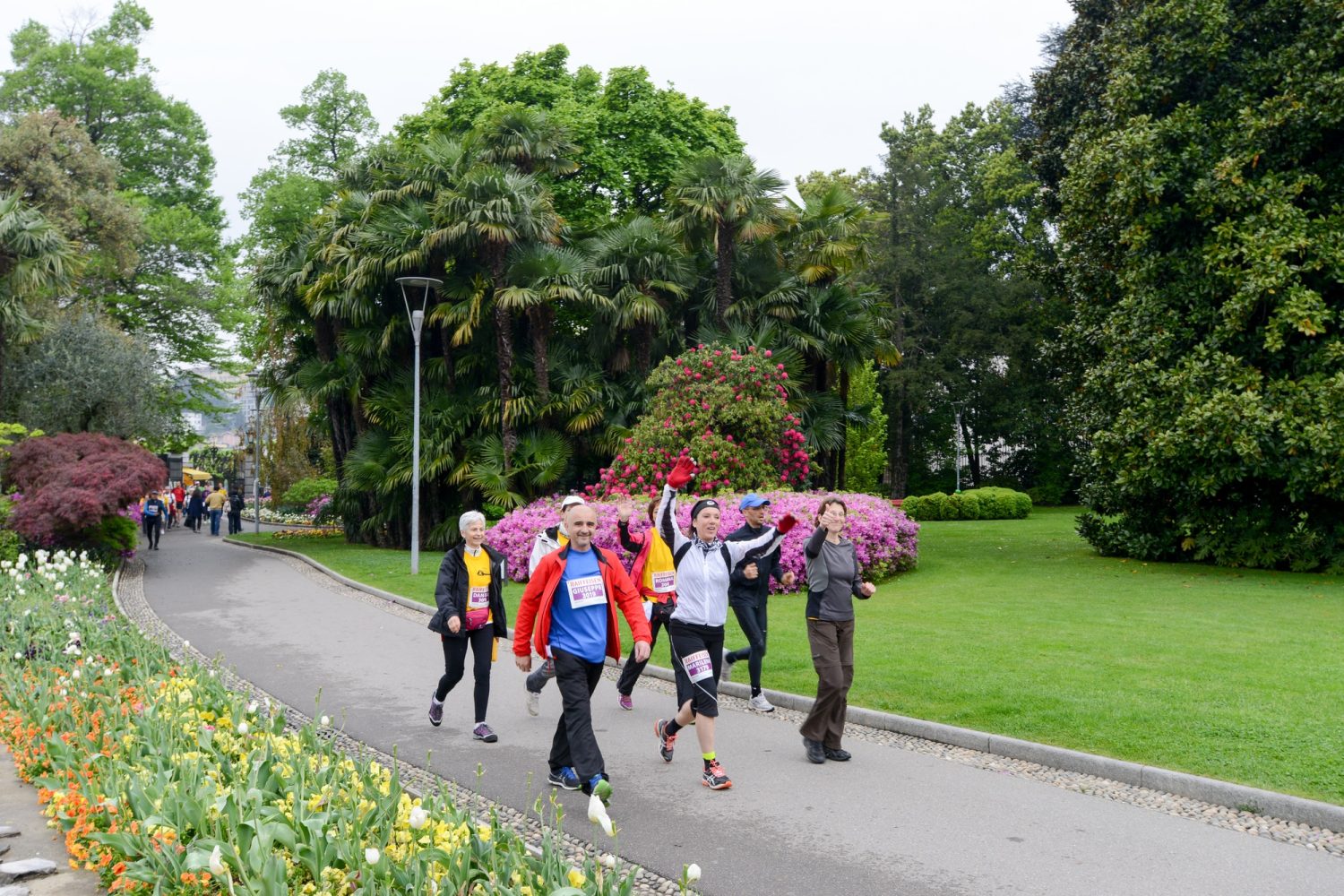Starting a half marathon walking training schedule for beginners is an exciting journey towards achieving a significant fitness milestone, especially for those new to running or walking long distances. My first foray into the world of half marathons taught me that effective preparation involves more than just completing the miles; it’s about embracing a training method that supports long-term health and prevents injuries. By incorporating a walk/run technique from the start, beginners can progressively increase their stamina in a way that’s both manageable and safe.

As I developed my training schedule, I learned the importance of consistency and pacing. Finding a comfortable walking pace that can be maintained for the duration of a half marathon is crucial. I also incorporated strength and cross-training exercises to ensure my body was well-rounded and strong, supporting my primary walking training. Moreover, I paid attention to nutrition and hydration strategies, which were imperative to fuel the workouts and expedite recovery. To prepare for the main event, I simulated race day conditions to familiarize myself with the experience and reduce race day anxieties.
Key Takeaways
- A structured training approach caters to building endurance progressively and reducing injury risks.
- Incorporating strength and cross-training exercises support walking training and overall fitness.
- Nutrition, hydration, and race day simulations are critical for successful half marathon completion.
Quick Navigation
Getting Started: Half Marathon Walking Training Schedule for Beginners

Embarking on your first half marathon is an exciting endeavor. I’ll guide you through the essentials—arming you with the necessary knowledge, picking appropriate gear, and setting a realistic timeline for your training.
Understanding the Basics
Before I started my training, I realized the importance of a structured approach. A half marathon, which is 13.1 miles, requires a progressive walking training schedule that blends walking and light running. I found a Marathon and Half Marathon guide with a 26-week walk/run program, perfect for beginners to build endurance and strength gradually.
Choosing the Right Gear
A good walking shoe is paramount. Comfort, support, and fit are crucial; you’ll spend a lot of time on your feet. When I selected my shoes, I focused on finding a pair that offered stability and cushioning to avoid injuries. Remember, this isn’t just a regular walk in the park—I made sure my shoes were up to the half marathon challenge.
Establishing a Timeline
Allocating enough time to train is a good idea. For most beginners, a training period of 20 to 26 weeks allows for a gentle increase in distance and provides ample opportunity to adapt to the rigors of extended walking sessions. I followed a schedule that started with shorter distances and slowly incorporated longer walks. A structured timeline, similar to the one provided in Hal Higdon’s training guide, helped to keep me focused and motivated throughout my training.
Jumping into a start today walking challenge can kickstart your journey. Setting a specific date to begin makes it more tangible, immensely boosting your commitment level.
Developing Your Training Schedule

In my experience, a structured approach is essential in preparing for a half-marathon walk, especially for beginners. Crafting a training schedule that includes a progressive week-by-week plan, rest days, and preparation for longer walks will help ensure success on race day.
Week-by-Week Breakdown: Half Marathon Walking Training Schedule for Beginners
My half marathon training plan begins simple and gradually increases in intensity and distance. Here’s a brief glimpse of what to expect:
- Weeks 1–4: Start with shorter walks (2–3 miles) three times a week, focusing on maintaining a steady pace.
- Weeks 5–8: Increase the walking distance by 10% each week, mixing in one longer walk at a comfortable pace.
- Weeks 9–12: Introduce back-to-back walking days to simulate race conditions and continue with weekly distance increases.
Incorporating Rest Days
Listening to my body and incorporating regular rest days in my plan is crucial. Typically, I rest one day after a long walk or a particularly intense week of training. These days off allow my muscles to recover and prevent overtraining. An ideal schedule includes at least two rest days each week.
Preparing for Longer Distances
In the latter stages of my training, preparing for the longer distances becomes my focus:
- The long walk is the centerpiece of my weekly training. About three weeks before the race, I gradually build up to at least 10 miles.
- Race day simulation is important. I include one or two long walks that mimic race day conditions, from the early start to the pacing strategies I plan to employ.
By adhering to this plan, I create a solid foundation and increase my chances of a successful and enjoyable half marathon experience.
Walking Techniques and Pacing

Mastering the right walking technique and pacing strategy is crucial for a successful half marathon. I’ll guide you through optimizing your walking form, finding a comfortable pace, and leveraging the run-walk method to tailor a regimen that helps you stride confidently toward the finish line.
Optimizing Your Walking Form
A proper walking form can make a significant difference in preventing fatigue and injuries. Keep your head up and your gaze forward instead of down at your feet to maintain alignment. Shoulders should be relaxed, not hunched, to allow full lung expansion. I swing my arms with a slight bend in the elbows at a 90-degree angle, coordinating with the opposite leg. This not only helps me maintain balance but also propels me forward effectively.
Finding Your Pace
Determining a comfortable pace is essential for long-distance events like a half marathon. Your easy pace—used for most training walks—should allow you to converse without becoming too winded. I use my long-run pace for distance practice, which is slightly slower than my race pace but faster than my easy pace, ensuring I can sustain the effort over time without overexerting myself. Listen to your body and adjust your speed accordingly; feeling out of breath means you must slow down.
Run-Walk Method
The run-walk method, devised by former Olympian Jeff Galloway, intertwines running and walking to decrease the overall impact on the body and manage endurance. For beginners like me, starting with one minute of running followed by three minutes of walking and gradually adjusting the intervals is a practical approach. This technique helps me build stamina while reducing the risk of injury. Remember, the goal is to maintain a steady, comfortable pace that keeps you moving efficiently over time, not to sprint the running portions.
I enhance my walking endurance, a cornerstone of half marathon training by paying attention to these aspects. Whether maintaining a light, easy pace or pushing a little harder during training runs, the balance I find with these techniques prepares me for race day.
Strength and Cross Training

Incorporating strength and cross-training into my half-marathon walking schedule is crucial. These practices enhance my endurance, prevent injury, and break the monotony of walking routines.
Strength Training Exercises
I focus on exercises that fortify the muscles I use while walking. Squats and lunges are vital for strengthening my quadriceps, hamstrings, and calves. I also perform core exercises like planks and leg raises that improve my stability and posture during long walks to prevent imbalances.
- Leg Workouts:
- Squats: 3 sets of 12 reps
- Lunges: 2 sets of 10 reps on each leg
- Core Stability:
- Planks: 3 sets of 30 seconds
- Leg Raises: 3 sets of 10 reps
The Role of Cross-Training
Cross-training is an excellent way for me to enhance my cardiovascular fitness without the impact of the stress of walking. Activities like swimming or cycling on days in between my walks keep my heart rate up and muscles engaged while allowing for recovery. This way, I avoid overtraining my walking-specific muscles and lower my risk of injury.
- Cross Training Options:
- Swimming: 30 minutes
- Cycling: 45 minutes
Balancing Training Intensity
Knowing when to push hard and when to recover is a skill I’ve developed over time. I opt for gentle cross-training or rest on days following hard workouts or long walks. Maintaining good form, especially during strength exercises, ensures I build muscle correctly and avoid injury.
- Weekly Routine Balance:
- Monday: Strength Training
- Tuesday: Easy Cross Training
- Wednesday: Hard Workout Walk
- Thursday: Rest or Gentle Cross Training
- Friday: Light Strength Training
- Weekend: Long Walks with Proper Form and Technique
Nutrition and Hydration

In preparing for a half marathon, I understand that my body needs the right nutrients and hydration to perform well and recover. Proper fueling and hydration strategies are crucial for building endurance and preventing fatigue.
Fueling Your Body for Long Walks
I rely on a combination of complex carbohydrates and proteins for sustained energy during long walks. I start my day with a meal rich in whole grains, like oatmeal, which provides lasting energy. Before my walks, I consume a banana or an energy gel, which delivers a quick glucose boost. Snacks such as a handful of almonds or a slice of wholegrain bread with peanut butter are good options to maintain my energy reserves throughout the walk.
Hydration Strategy
I prioritize hydration as much as nutrition, drinking about 17-20 oz of water 2-3 hours before walking. During the walk, I aim for 7-10 oz every 10-20 minutes and choose sports drinks when I need to replenish electrolytes, particularly on hot and humid days when I sweat more. Post-walk, I ensure rehydrating immediately with water or an electrolyte drink to replace fluids lost through sweat.
The Importance of Recovery Nutrition
After a long walk, I focus on recovery nutrition, which involves consuming a mix of carbohydrates and protein within 30 minutes to an hour to replenish glycogen stores and repair muscle tissue. I often opt for a smoothie with Greek yogurt and berries or a turkey and cheese sandwich on whole-grain bread. This approach accelerates my recovery and prepares my muscles for the next training session.
Injury Prevention and Recovery

In my training routine, I emphasize the importance of carefully balancing workouts with recovery days to minimize the risk of injury. It’s crucial to ensure enough rest to support the body’s natural healing processes, especially when adapting to the demands of a half-marathon walking schedule.
Listening to Your Body
My approach to training is to be attentive to what my body tells me. When I feel any unusual aches or pains, I take them as a signal to ease up on the intensity or take an additional day of rest. This is particularly pertinent for individuals with joint concerns; those with knee or hip replacements should be extra vigilant and adjust their schedules accordingly.
Recovery Techniques
I adopt various recovery techniques to keep my body in top condition. Proper hydration, a balanced diet rich in anti-inflammatory foods, and adequate sleep are foundational to my recovery. I also integrate active recovery methods, such as low-intensity walking or swimming, to maintain mobility without overexertion. Stretching and foam rolling are parts of my daily routine to alleviate muscle tightness.
When to Seek Professional Help
I understand the limitations of my expertise and recognize when it’s time to seek professional advice. If I experience persistent discomfort or a potential injury that doesn’t improve with rest, seeking a medical professional’s help is my immediate action. They can provide targeted advice and interventions, including physical therapy or specific exercises tailored to my situation.
Race Day Preparation

Race day is the culmination of all my training efforts, where I put my preparation to the test. My focus here is to enter with a solid plan, stay equipped for what’s ahead, and set myself up for effective recovery.
The Final Week
In my final week leading up to the race, I taper down my walking training to maintain my fitness while allowing my body to rest. I focus on hydration, nourishing my body with well-balanced meals, and getting plenty of sleep. I must pay attention to any minor aches and provide my body with the needed care to be in optimal condition for race day.
- Monday to Wednesday: Shorter, less intense walks; focus on stretching and mobility.
- Thursday: Rest day; ensure all necessary race gear is organized.
- Friday: A light walk to keep my muscles engaged.
- Saturday: Rest, hydrate, and plan logistics for race morning.
What to Expect on Race Day
My race day starts early, ensuring I arrive at the start line with ample time to spare. A smoothly executed morning routine minimizes stress and sets the tone for the event. At the start line, I am surrounded by fellow participants, all united by a common goal. The atmosphere is electric, filled with excitement and anticipation. As I set out, I abide by my tried-and-tested pace strategy, saving energy for the later stages of the race distance to cross the finish line of the half marathon.
- Morning: Have a light, familiar breakfast; arrive early to avoid rushing.
- Start Line: Engage in a brief warm-up routine; secure my belongings if necessary.
- Throughout the Race: Monitor my hydration and energy levels; adjust the pace as needed.
Post-Race Recovery
After crossing the finish line, my immediate priority is my recovery. This starts with gentle walking to cool down my muscles, followed by hydration and a nutrient-rich snack. In the following days, I prioritize rest, light cross-training if comfortable, and perhaps a massage to aid in muscle recovery. Celebrating my achievements is important, and I acknowledge the hard work that got me to this point. It’s essential not to rush back into intense training, as my body needs time to recuperate.
- Day 1: Cool down walk; hydrate and replenish with food rich in protein and carbs.
- Days 2-7: Rest and light cross-training like swimming or cycling as my body allows.
Good luck with your race day preparation. Remember, sticking to my plan and listening to my body is the key to crossing the finish line with a smile.
Additional Resources

In preparing for a half-marathon, I recognize the importance of surrounding myself with the right resources. Whether finding a community for support or seeking expert advice to tailor my training, these aspects are crucial for a successful walking half-marathon program.
Finding a Training Community
Joining a training community gives me the motivation and camaraderie that can make my training enjoyable. I often check my local running store for group training runs, which help me stick to my schedule and provide me with valuable insights from more experienced runners.
Conclusion: Half Marathon Walking Training Schedule for Beginners
Embarking on a half marathon walking training schedule for beginners marks the start of a rewarding journey toward achieving a significant fitness milestone. This comprehensive approach not only prepares you physically for the race day but also promotes a healthier lifestyle. With dedication and the right plan, beginners can confidently cross the finish line, proving the effectiveness of a structured half marathon walking training schedule.


